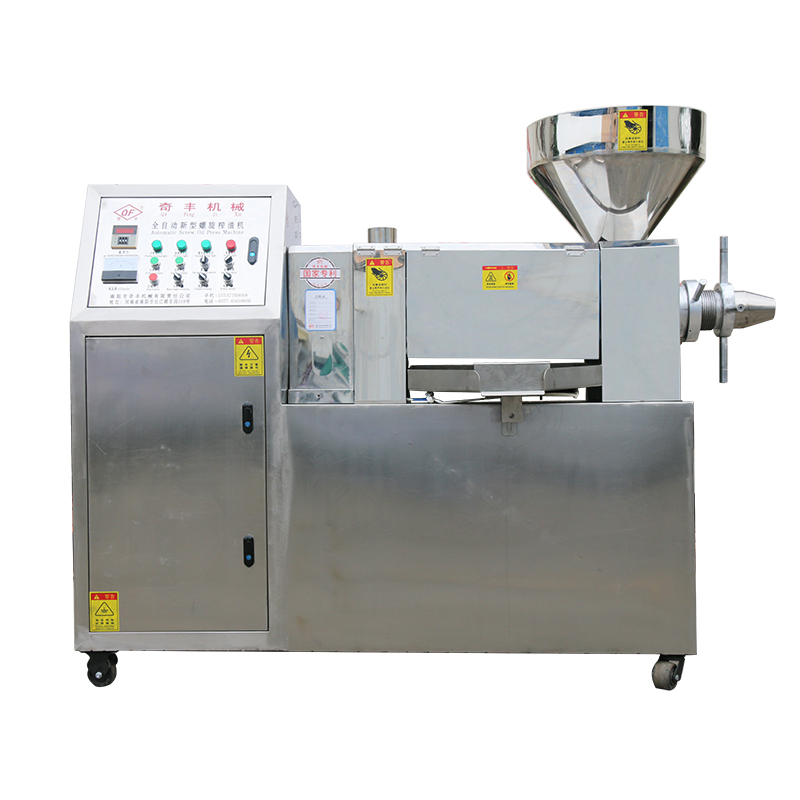How does oil extraction machines work?
Oil extraction machines play a crucial role in extracting oil from various sources, including seeds, nuts, and fruits. These machines utilize different methods to extract oil efficiently and effectively. In this article, we will delve into the workings of oil extraction machines, providing you with a comprehensive understanding of their operation.
Understanding the Basic Principles
Before exploring the specifics, it's essential to grasp the fundamental principles that underlie the operation of oil extraction machines. The primary objective is to separate the oil from the raw material by applying pressure or using a solvent. The choice of method depends on the type of oil being extracted and the desired yield.
Mechanical Extraction Method
One common method used in oil extraction machines is mechanical extraction. This process involves crushing or grinding the raw material to break the oil-bearing cells and release the oil. Here's a step-by-step breakdown of how mechanical extraction typically works:
Preparation: The raw material, such as seeds or nuts, undergoes cleaning and conditioning to remove impurities and improve the extraction process's efficiency.
Grinding/Crushing: The prepared raw material is fed into the oil extraction machine, where it goes through a grinding or crushing mechanism. This step helps to break down the cell walls and increase the surface area for oil release.
Pressing: The crushed material is then subjected to high pressure, often through an expeller press or a screw press. The pressure applied squeezes the oil out of the raw material, while the solid residue, known as the cake or meal, is separated.
Filtration: The extracted oil may contain impurities or solid particles. To obtain a cleaner oil, it undergoes filtration, typically using filters or filter presses. This process removes any remaining solids, ensuring a purer end product.
Solvent Extraction Method
Another method commonly employed in oil extraction machines is solvent extraction. This method is particularly suitable for oilseeds with lower oil content. Here's an overview of how solvent extraction generally works:
Preparation: Similar to mechanical extraction, the raw material is first prepared by cleaning and conditioning.
Extraction: The prepared material is then subjected to a solvent, such as hexane, which helps dissolve the oil. The solvent interacts with the oil-bearing cells, separating the oil from the solid components.
Desolventizing: After the oil is extracted, the solvent-oil mixture goes through a desolventizing process to remove the solvent. This is typically done by heating the mixture, allowing the solvent to evaporate and leaving behind the extracted oil.
Distillation: The solvent recovered during desolventizing undergoes distillation, where it is separated from any remaining impurities. This process ensures the solvent can be reused in future extraction cycles.
Additional Processing Steps
Once the oil is extracted using either mechanical or solvent methods, it may undergo further processing steps depending on the desired end product. Some common additional processing steps include:
Refining: This process involves removing impurities, such as gums, waxes, and free fatty acids, from the extracted oil. Refining helps improve the oil's quality, taste, and shelf life.
Degumming: This step is specifically used for vegetable oils and involves removing phospholipids from the oil through a water or acid treatment.
Bleaching: Bleaching aims to remove pigments and other color-causing substances from the oil, resulting in a lighter and more visually appealing product.
Deodorization: This process removes any unwanted odors or flavors from the oil, enhancing its sensory properties.
It's important to note that the specific steps and techniques involved in oil extraction can vary depending on the type of oil being extracted, the source material, and the desired quality of the end product.
In conclusion, oil extraction machines employ mechanical or solvent extraction methods to separate oil from raw materials. Mechanical extraction involves grinding or crushing the material and applying pressure to extract the oil, while solvent extraction uses a solvent to dissolve and separate the oil. Additional processing steps, such as refining, degumming, bleaching, and deodorization, may be performed to further refine the extracted oil. By understanding how oil extraction machines work, you can appreciate the intricate process behind obtaining high-quality oils.


Comments
0